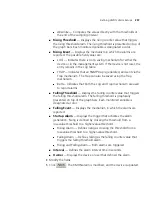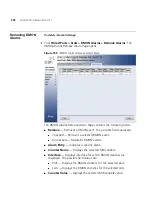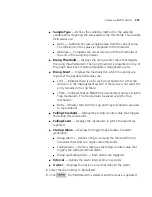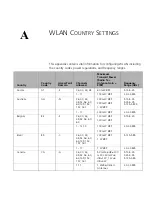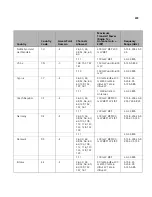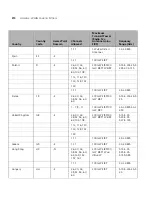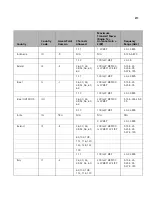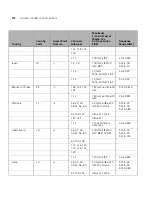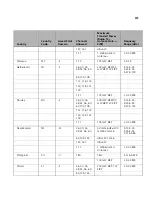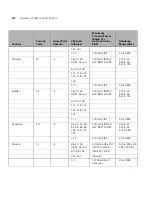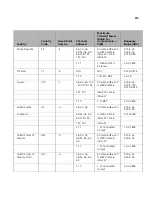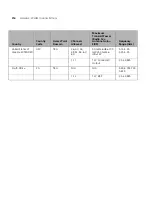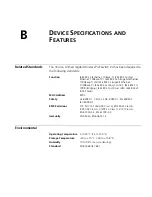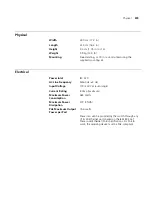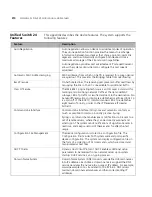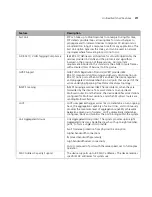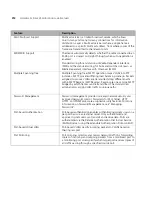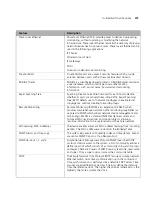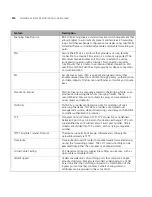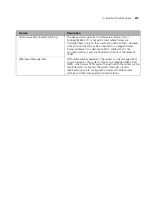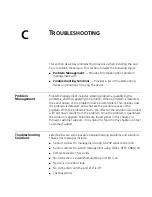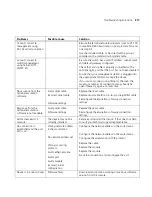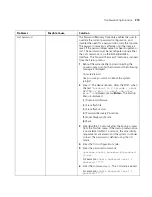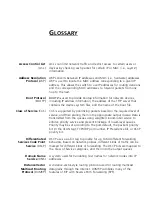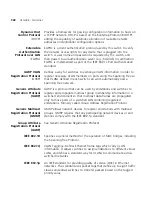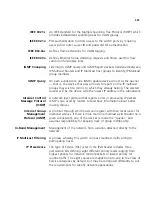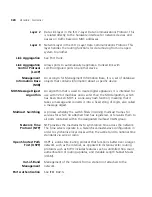
310
A
PPENDIX
A: D
EVICE
S
PECIFICATIONS
AND
F
EATURES
Unified Switch 24
Features
This appendix describes the device features. The system supports the
following features:
Feature
Description
Auto Negotiation
Auto negotiation allows an device to advertise modes of operation.
The auto negotiation function provides the means to exchange
information between two devices that share a point-to-point link
segment, and to automatically configure both devices to take
maximum advantage of their transmission capabilities.
Auto negotiation provides port advertisement. Port advertisement
allows the system administrator to configure the port speeds
advertised.
Automatic MAC Addresses Aging
MAC addresses from which no traffic is received for a given period
are aged out. This prevents the Bridging Table from overflowing.
Back Pressure
On half-duplex links, the receiving port prevents buffer overflows by
occupying the link so that it is unavailable for additional traffic.
Class Of Service
The IEEE 802.1p signaling technique is an OSI Layer 2 standard for
marking and prioritizing network traffic at the data link/MAC
sub-layer. 802.1p traffic is classified and sent to the destination. No
bandwidth reservations or limits are established or enforced. 802.1p
is a spin-off of the 802.1Q (VLANs) standard. 802.1p establishes
eight levels of priority, similar to the IP Precedence IP Header
bit-field.
Command Line Interface
Command Line Interface
(CLI) syntax and semantics conform as
much as possible to common industry practice. Syslog
Syslog is a protocol that enables event notifications to be sent to a
set of remote servers, where they can be stored, examined and
acted upon. The system sends notifications of significant events in
real time, and keeps a record of these events for after-the-fact
usage.
Configuration File Management
The device configuration is stored in a configuration file. The
Configuration file includes both system wide and port specific
device configuration. The system can display configuration files in
the form of a collection of CLI commands, which are stored and
manipulated as text files.
DHCP Clients
Dynamic Host Client Protocol
. DHCP enables additional setup
parameters to be received from a network server upon system
startup. DHCP service is an on-going process.
Domain Name System
Domain Name System
(DNS) converts user-defined domain names
into IP addresses. Each time a domain name is assigned the DNS
service translates the name into a numeric IP address. For example,
www.ipexample.com is translated to 192.87.56.2. DNS servers
maintain domain name databases and their corresponding IP
addresses.
Summary of Contents for 3CRUS2475 24
Page 137: ...Defining LAG Membership 137...
Page 139: ...139 Defining Voice VLAN Defining GVRP...
Page 194: ...194 CHAPTER 9 CONFIGURING IP INFORMATION Static Indicates the ARP entry is a static entry...
Page 197: ...Defining ARP Interface Settings 197 Unchecked Maintains the current ARP entries...
Page 321: ...320 APPENDIX C TROUBLESHOOTING...
Page 329: ...328 APPENDIX GLOSSARY...

